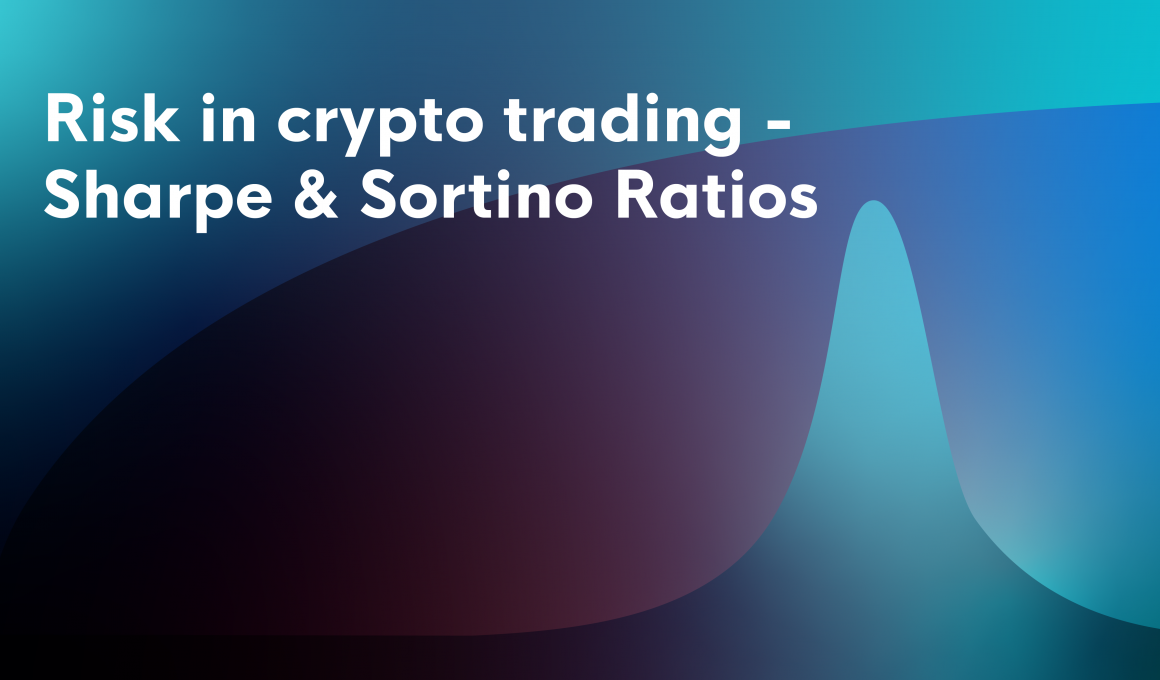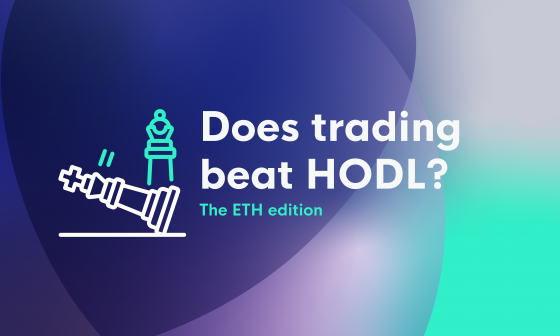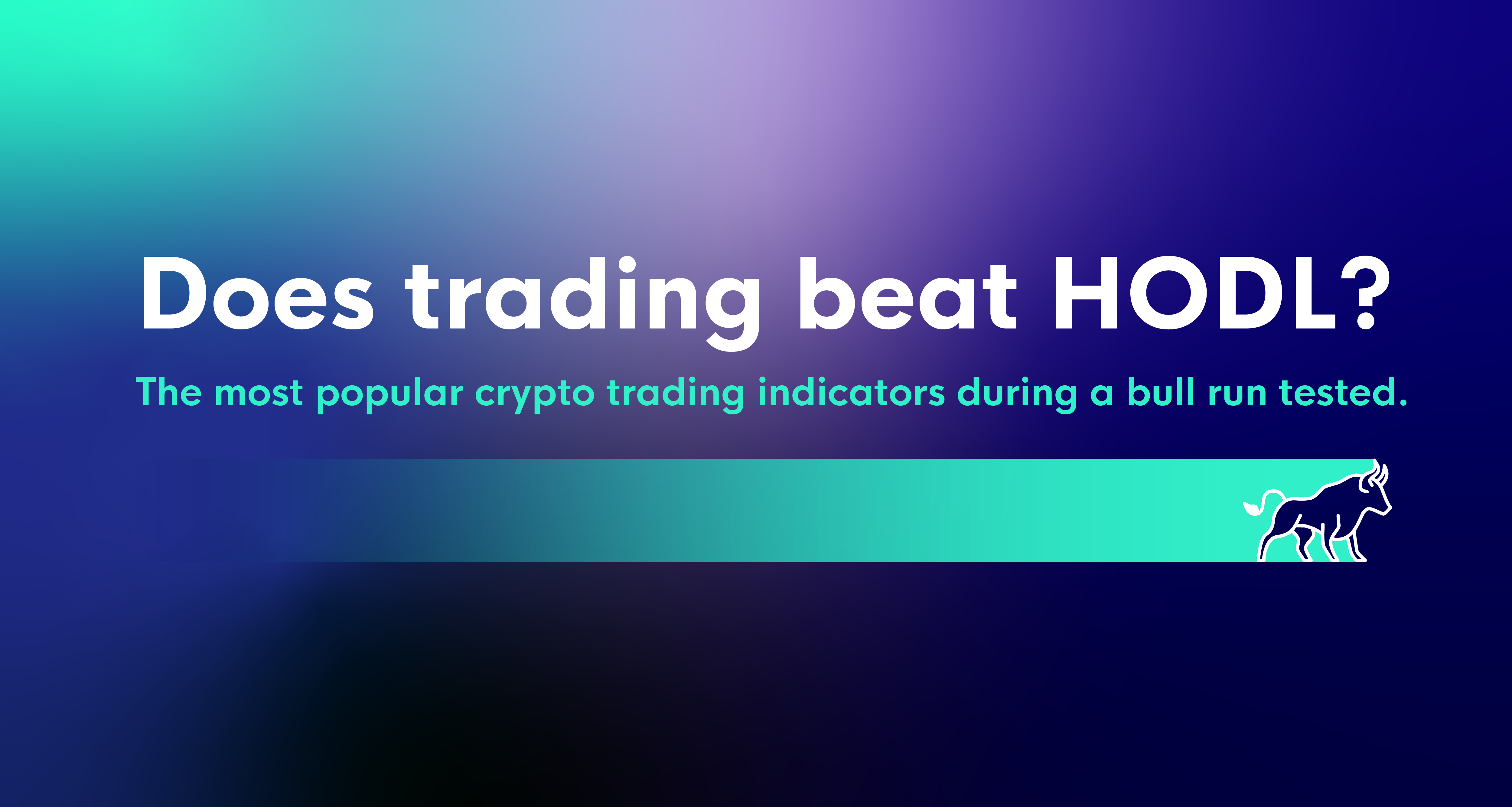Risk in cryptocurrencies
Cryptocurrencies have established themselves globally as an opportunity that, whilst risky, remains extremely attractive. Risky because they involve excessive volatility in their value. You may have seen that in a matter of days the situation can change dramatically due to different circumstances. You can win a lot but in the same way lose a lot.
We will look at how to measure the balance between risk and reward of investing in specific cryptocurrencies and how to value your trading strategies in this respect. Sharpe and Sortino ratios are the most mainstream tools to do just that. They used to require calculations, but today you can get them through back testing or using analytics on the strategy you are already trading.
Knowing your appetite for risk and understanding the psychology of trading is essential before investing in any of them.
Risk management is more than a Stop Loss
Why don’t I just buy low, sell high, right? Well, that is easier said than done 😊 the ability to buy low and sell high requires traders to be able to determine roughly when the low and soaring prices of digital assets will be. Sadly, this strategy is difficult to execute even for seasoned veterans to say the least, so when we are wrong about the price movement we lose and with no risk management in place we lose even worse.
Sharpe Ratio
The Sharpe Ratio was developed in 1966 by Nobel laureate William Sharpe of Stanford University. It measures the Return/Historical Volatility ratio (Standard Deviation) of an investment. The numerator in this equation is an investment’s profitability minus the risk-free interest rate, usually T-Bills, as the Government defaulting on its debt has a negligible risk or is risk-free altogether, and the denominator is the volatility or standard deviation of that profitability in the same period.
As the risk-free rate changes over time and obscures the profitability, the risk-free rate can be omitted in this calculation. For this reason, we will not include the risk-free rate in the calculation to give better apples to apples comparison.
The higher the Sharpe Ratio, the better the investment returns in relation to the amount of risk that has been taken in the investment. The higher the volatility, the higher the risk, since the probability that this investment will have negative returns is increased due to the higher volatility of its returns.
On the other side, the higher the volatility, the greater the probability of high positive returns. Therefore, when the volatility of the trade is large, the higher the denominator of the equation and the lower the Sharpe Ratio. Let’s put this into context with an example. We have two differing investments, VISA and the CRO crypto token.
VISA
1-year return 14.4%
1-year volatility 8%
Sharpe Ratio = 14.4/ 8 = 1.8
CRO
1-year return 78.1%
1-year volatility 49%
Sharpe Ratio 78.1/ 49 = 1.59
As we can see, $VISA, although it has a lower return than investment $CRO, $VISA has a higher Sharpe ratio, because its volatility has been less. It has oscillated less; it had less ups and downs.
The Sharpe ratio helps us to compare two investments or a group of investments with each other. Knowing that an investment has a Sharpe Ratio of 1.8 is of little use if we do not compare it at the same time with another investment. Therefore, in this example, although $VISA has a lower return than $CRO, taking the Sharpe ratio into account it has a better return per unit of risk.
Unlike other indicators that measure an investment in relation to its deviation from its benchmark, the Sharpe Ratio is a good method to measure the standard deviation of the performance of any investment or trading strategy.
Sharpe ratio of crypto trading strategies
Just as the Sharpe Ratio is often used on investments, it is used to evaluate trading strategies.
Below we have the strategy attributes in CLEO.one, showing the Profit Factor, Sortino Ratio, Sharpe Ratio and Max Drawdown. You may then backtest other strategies or alter the same strategy and tweak it as such that you have the return and risk that you desire. Here we see the Sharpe Ratio expressed that you would compare with other backtested strategies.

A Sharpe ratio that is hovering below one is not good and indicative that the risk to return is not impressive. Above one is a strategy that has a mediocre to good risk to return. When you hit two that is great and above three is bourgeoning on excellent. Here is an excerpt from a strategy with the explanation.

The green dots which are yellow in the Sharpe ratio give you an indication of how well your strategy is doing.
The 5-point scale for this ration in CLEO.one works like this:
| Sharpe Ratio evaluation in CLEO.one | Meaning |
| ••••• | Risk is minimised and the potential for reward comparatively is immense. Ultimately, a well-balanced strategy where reward outperforms risk |
| •••• | Higher skew towards reward than risk, potentially a great strategy |
| ••• | Good balance between risk and reward, the risk is compensated |
| •• | The risk of this strategy is not compensated by the reward |
| • | Potentially problematic strategy that has a terrible risk to reward ratio. |
As the Sharpe ratio uses total volatility in its calculation, you could have a strategy that is heavily skewed to negative volatility and as we all know in the crypto world, in one fell swoop that loss or win could be turned on its head.
Therefore, it doesn’t give a clear picture of the situation. The biggest drawdown of Sharpe ratio is that it penalizes positive volatility, which is why Sortino ratio was introduced.
Sortino Ratio
To put it simply, it is an adjusted Sharpe ratio. The Sharpe ratio, remember, is the difference between the return of the investment minus the return of a risk-free asset, divided by the standard deviation (volatility). In calculating volatility, positive and negative variations are considered.
The Sortino ratio for its part has the same denominator, but instead considers only negative volatility (that is, drops). The formula and how it is calculated is remarkably like the Sharpe ratio and is as follows:
Sortino ratio = Average return of the portfolio – Average return of the portfolio of risk-free assets / Standard deviation of declines (negative returns only) (Source).
As with the Sharpe ratio, we will omit the risk-free rate in this calculation, as it is somewhat controversial and is not a constant measure.
The rationale for the ratio would be how much return we expect to obtain based on the risk of falls our investment has. It is more demanding than the Sharpe ratio, since the deviation of the rises is not considered.
Suppose we have a crypto portfolio with 5 assets that have an average return in the last year of 11%, and the volatility of the portfolio (standard deviation) has been 6%. Finally, the dispersion of the falls was 7%.
If we calculate the Sharpe ratio, we have the following result: 11% / 6% = 1.83
On the other hand, if we calculate the Sortino ratio, as the drops have had a dispersion higher than the total standard deviation, the ratio worsens.
Sortino Ratio: 11% / 7% = 1.57
This example shows the Sortino ratio gives a more conservative estimate than the Sharpe ratio, because it only looks at the negative returns in its calculation, the Sharpe ratio using the negative and positive returns it’s volatility calculation. Investors that wish to look only at the negative volatility of an asset can use the Sortino ratio. The Sortino ratio, although it is less synonymous than its popular cousin the Sharpe ratio, which is used very commonly, the Sortino ratio provides a sought-after alternative.
Sortino ratio and trading strategies
Here are two examples from CLEO.one displaying the Sortino ratio. In the first one, the Sortino Ratio is better than the Sharpe ratio, since the positive volatility has been higher than the negative volatility, as the graph displays.

In this second strategy you see that the Sortino ratio is worse than the Sharpe ratio, as the negative volatility far outweighed the positive volatility, displayed in the graph.

Outsize gains
Outsize gains are those that are largely beating the market or other traders. The potential for outsize gains in the crypto world is linked to crypto’s skyrocketing and crashing to earth volatility. These outsize gains can lead to some fantastic growth potential or heart wrenching losses.
Due to their volatile nature, the Sharpe ratio and Sortino ratios of crypto currencies, can to some be perceived as over emphasised in comparison to traditional asset classes. Understanding that the crypto space is a different animal to conventional asset classes is important in terms of expectations. We must put these differences into consideration.
Berkshire Hathaway, run by Warren Buffet, had a Sharpe ratio of 0.76 for the entire period 1976 to 2011. This faired higher than any comparative stock or mutual fund spanning back historically more than 30 years (Source).
Some crypto currencies have Sharpe ratios 10 times and more, greater than Berkshire Hathaway. What should we conclude from this, putting your money into crypto is better than what Warren Buffet can achieve? As you can see, the Sharpe ratio is one of many tools that you can use to decide whether you should invest or not in an asset class and perhaps not to be used solely as your decision–making tool in choosing the best crypto trading strategy.
Conclusion
The Sortino and Sharpe ratio are closely related by using returns and volatility to show you how great the returns are in comparison with the risk. Using the Sharpe and Sortino ratio, you can make an apples-to-apples comparison of differing assets and trading strategies. This lets you pick assets and strategies that give you more bang for your buck in their returns per unit of risk, which is a great starting point.
To avoid spending time and effort on calculating both ratios and to gain access to even more risk measures, try back testing and live trading analytics in CLEO.one for free. If you are running multiple trading strategies it will be a piece of cake to compare them in terms of risk to reward. In a market where very few traders use data, this could be your trading edge.
References:
https://www.investopedia.com/terms/s/sharperatio.asp
https://corporatefinanceinstitute.com/resources/knowledge/finance/sharpe-ratio-definition-formula/
https://www.investopedia.com/terms/s/sortinoratio.asp
https://corporatefinanceinstitute.com/resources/knowledge/trading-investing/sortino-ratio-2/







